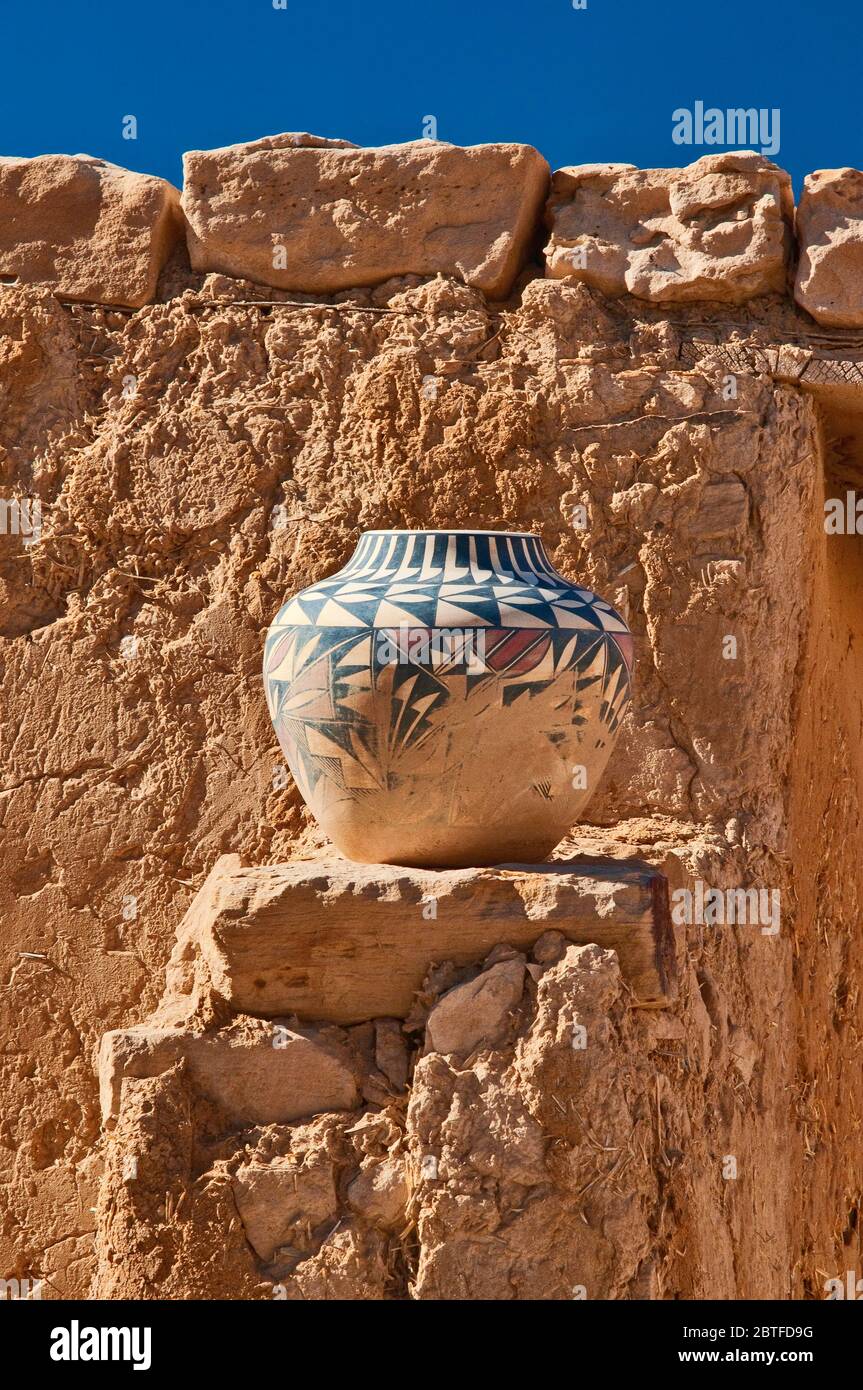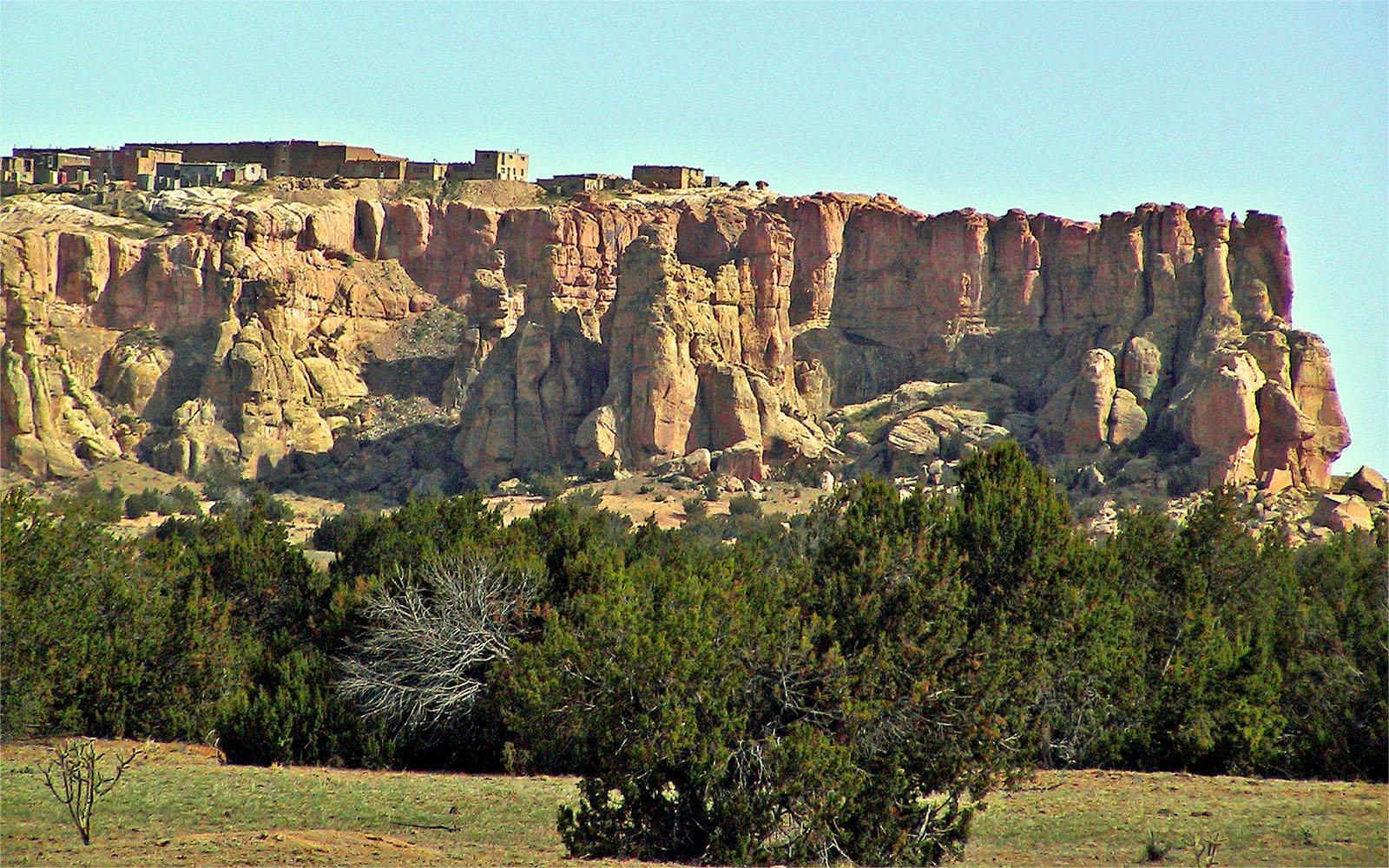
Acoma Pueblo: Sky City’s Enduring Legacy of Stone and Clay
Perched precariously atop a 367-foot sandstone mesa, an ancient city rises from the high desert plains of New Mexico, a testament to human resilience, unwavering spirit, and a profound connection to the earth. This is Acoma Pueblo, known as "Sky City" (Haak’u in Keresan), the oldest continuously inhabited community in North America. For over 800 years, the Acoma people have called this breathtaking natural fortress home, safeguarding a vibrant culture whose most iconic expression is its exquisite, thin-walled pottery – a tradition woven into the very fabric of their identity.
To understand Acoma is to first grasp the sheer audacity of its location. The mesa, a sentinel of stone, commands panoramic views, offering both defense and a spiritual vantage point. Access to the pueblo was historically via hand-carved footholds in the rock face, a challenging ascent that underscored the community’s determination to protect its way of life. Today, visitors typically arrive by bus, but the sense of awe at this natural citadel remains. Stepping onto the mesa, one enters a world where time seems to slow, where adobe structures, built from the earth itself, blend seamlessly with the sky. There are no power lines, no running water, and only a handful of families still reside permanently on the mesa, preserving the ancient ways amidst the stark beauty.
The heart of Sky City is not just its geography but its people and their enduring traditions. Among these, the San Esteban del Rey Mission Church stands as a monumental symbol of both conquest and endurance. Constructed between 1629 and 1640 by forced Acoma labor under Spanish rule, this massive adobe structure, a National Historic Landmark, incorporates two huge, hand-carved pine beams (vigas) that span its width – beams carried from mountains 30 miles away without the aid of wheeled vehicles. Its austere beauty and profound history speak volumes about the Acoma’s ability to adapt, survive, and integrate new elements while preserving their core identity. The church, like the pueblo itself, is a living artifact, a place of worship and a repository of generations of stories.
The Clay Speaks: A Timeless Pottery Tradition
While the sky-high dwelling captures immediate attention, it is the ancient tradition of pottery making that truly embodies the Acoma spirit and serves as a vital economic and cultural anchor. Acoma pottery is not merely craft; it is an artistic language, passed down through matriarchal lines for centuries, connecting the present to a lineage stretching back to ancestral Puebloan peoples.

The distinctiveness of Acoma pottery lies in several key characteristics: its incredible lightness, the exceptional thinness of its walls, and its intricate, often geometric, black-on-white designs. These qualities are a direct result of the unique materials and meticulous techniques employed by Acoma potters.
The clay itself is sourced from specific veins within the lands surrounding the Acoma mesa, often requiring considerable effort to collect. This raw clay is then prepared with a crucial tempering agent: crushed shards of broken Acoma pottery, known as grog. This practice, unique to Acoma, allows for the creation of incredibly thin, yet strong, vessel walls that can withstand the firing process without cracking. It’s a testament to sustainability and the cyclical nature of their art – old pots literally become part of the new.
Once the clay is prepared, the potters begin the labor-intensive coiling method. Rings of clay are carefully stacked and smoothed, gradually building the vessel’s form. This process demands immense patience, skill, and an intuitive understanding of the clay’s properties. "Every coil is a prayer," one might imagine an elder saying, as the hands shape the earth into a container for life.
After the vessel is formed and dried, it undergoes a meticulous sanding process to achieve a smooth, refined surface. This is followed by the application of a white slip – a thin, watery coating of fine white clay – which provides the characteristic light background for the intricate designs.
The designs themselves are where the spirit of Acoma truly shines. Historically, Acoma pottery featured stark black-on-white geometric patterns, often depicting elements of their natural world: clouds, rain, lightning, mountains, and the tracks of birds and animals. The black pigment is traditionally derived from boiling the wild spinach plant (guaco) or iron-rich minerals, mixed with a binder. Red pigments, when used, often come from hematite. These pigments are applied with brushes fashioned from chewed yucca fibers, allowing for remarkably fine lines and detailed work.
A distinctive feature often found in Acoma designs is the "spirit break" or "Acoma break" – a small, intentional gap in a continuous line or pattern. This break is believed to allow the spirit of the pot to exit and enter, a humble acknowledgement that no human creation is perfect, and a symbolic gesture of connection to the spiritual world.
Evolution and Masters of the Form
While deeply rooted in tradition, Acoma pottery has also evolved. Over time, influences from neighboring pueblos and broader artistic movements have seeped into the designs. Post-contact, floral motifs, Mimbres animal designs (particularly birds and deer), and even European-inspired patterns began to appear, often integrated with the traditional geometric elements. The shift from black-on-white to black-on-orange or black-on-tan backgrounds, using a natural orange-firing clay without a white slip, also became common, particularly in the 20th century.
The knowledge and techniques are passed down through generations, often from mother to daughter, grandmother to granddaughter. This intergenerational transfer ensures the continuity of the tradition, with each new potter bringing her own voice and interpretation to the ancient forms.

Among the many talented Acoma potters, certain names stand out as masters whose work has elevated the art form and brought it to national and international recognition. Lucy M. Lewis (1890-1992) is perhaps the most revered. A matriarch of Acoma pottery, Lewis was instrumental in reviving traditional Acoma designs and firing methods during the mid-20th century, inspiring countless others. Her commitment to authenticity and the meticulous quality of her work became a benchmark for Acoma potters. Her daughters, including Emma Lewis Mitchell, Dolores Lewis Garcia, and Mary Lewis Garcia, continued her legacy, ensuring the perpetuation of the family’s distinctive style and traditional techniques. Other notable potters like Marie Z. Chino, a contemporary of Lewis, also contributed significantly to the recognition and preservation of Acoma pottery.
Firing the Future: Challenges and Continuity
The final, crucial step in the pottery process is firing. Traditionally, Acoma pots are open-fired outdoors, using sheep dung, wood, or coal as fuel. This method requires careful monitoring of temperature and wind, as an uneven fire can easily crack or damage the delicate vessels. The smoke and heat transform the soft clay into durable ceramic, sealing the pigments and giving the pot its final character. This ancient method, still practiced by many, connects the potter directly to the elements, grounding the art in the natural world.
In the modern era, Acoma Pueblo faces the delicate balance of preserving its ancient traditions while navigating the complexities of the contemporary world. The art market, while a boon, also presents a delicate balance. Potters must strive to meet market demands without compromising the authenticity and spiritual significance of their work. There’s a constant negotiation between innovation and tradition, between economic necessity and cultural preservation.
Tourism, particularly to Sky City, provides an important revenue stream and an opportunity to share Acoma culture with the world. However, it also requires careful management to ensure that the sacred spaces and traditions are respected. The Acoma people are fiercely protective of their cultural heritage, and rules regarding photography and access to certain areas are strictly enforced, reflecting their deep reverence for their ancestral home and way of life.
Today, efforts to preserve the Keresan language, traditional ceremonies, and the art of pottery making are paramount. The Haak’u Museum and Sky City Cultural Center, located at the base of the mesa, serve as vital institutions for cultural education and preservation, ensuring that the stories and skills of Acoma are passed on to future generations. They provide a space for Acoma artists to showcase and sell their work, directly supporting the community.
Acoma Pueblo is more than just an ancient settlement or a center for exquisite pottery; it is a living, breathing testament to human endurance and cultural continuity. The Sky City, with its stone dwellings and the timeless art born from its earth, stands as a powerful symbol of a people who have thrived against the odds. The gentle curve of an Acoma olla, the delicate lines of its design, and the palpable lightness of its form each whisper tales of generations, of connection to the land, and of an unwavering spirit. In every pot, the Acoma people continue to tell their story, a narrative of survival, beauty, and the enduring legacy of stone and clay, reaching from the ancient past into an ever-evolving future.